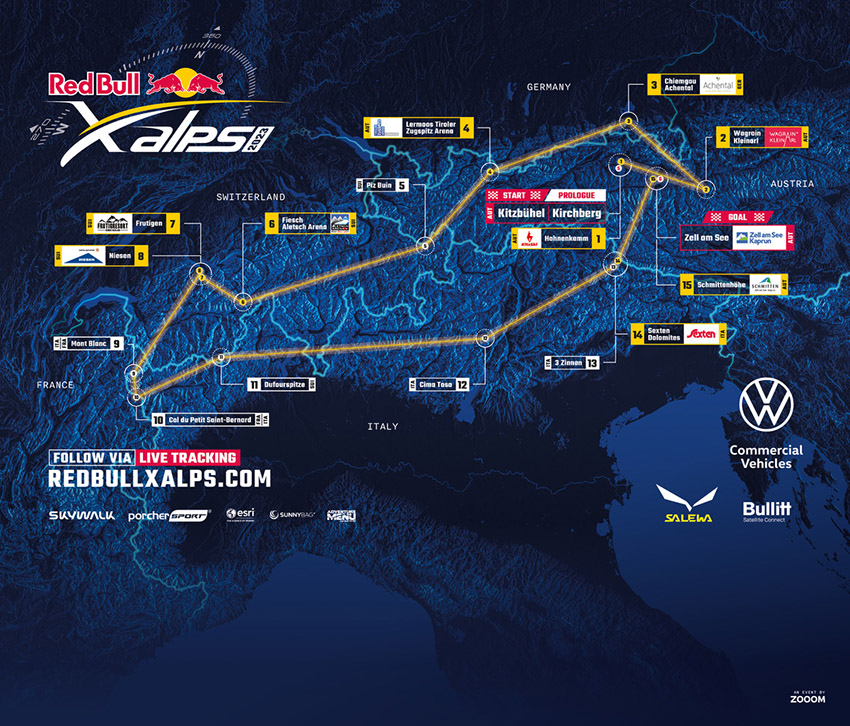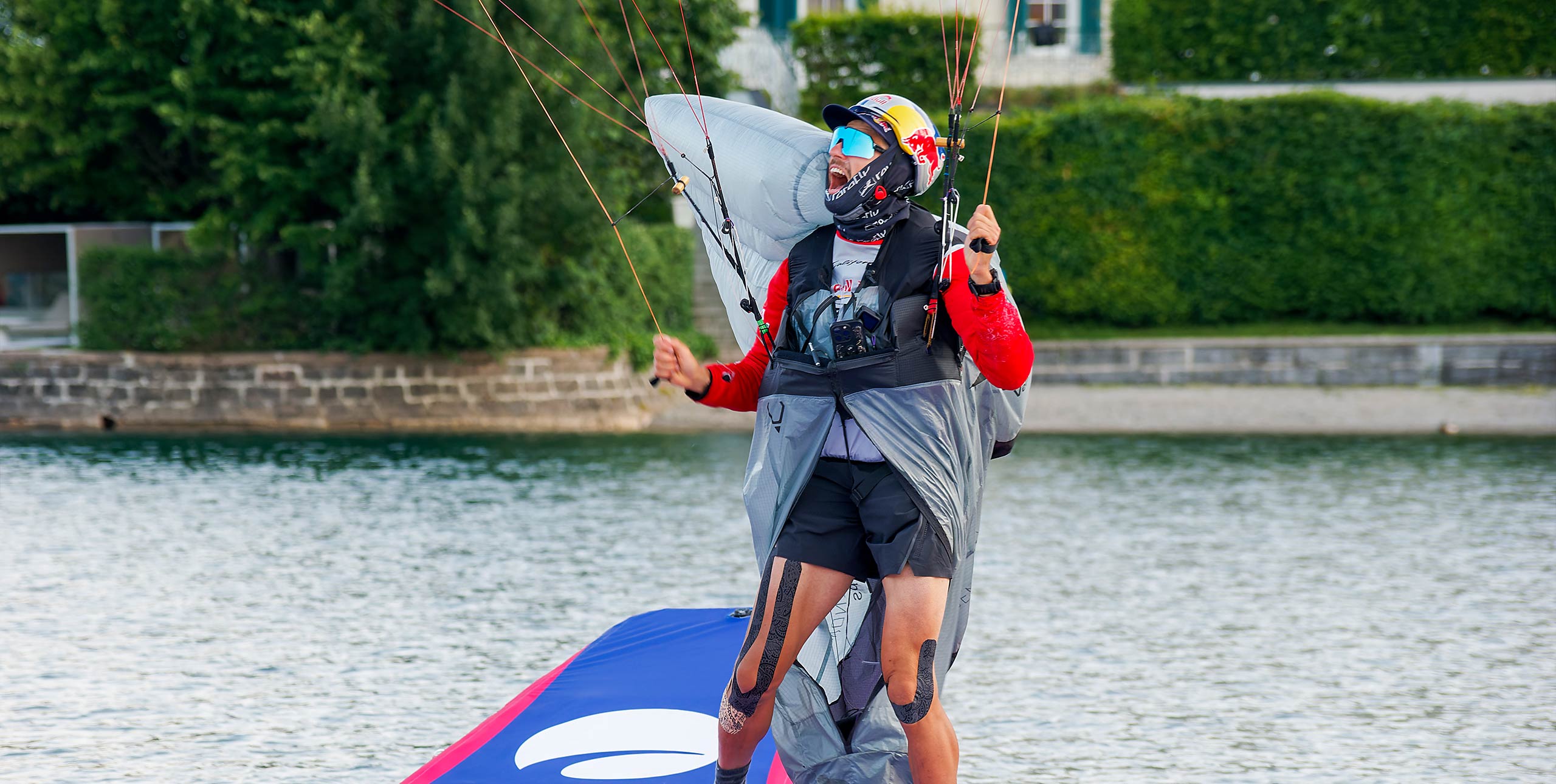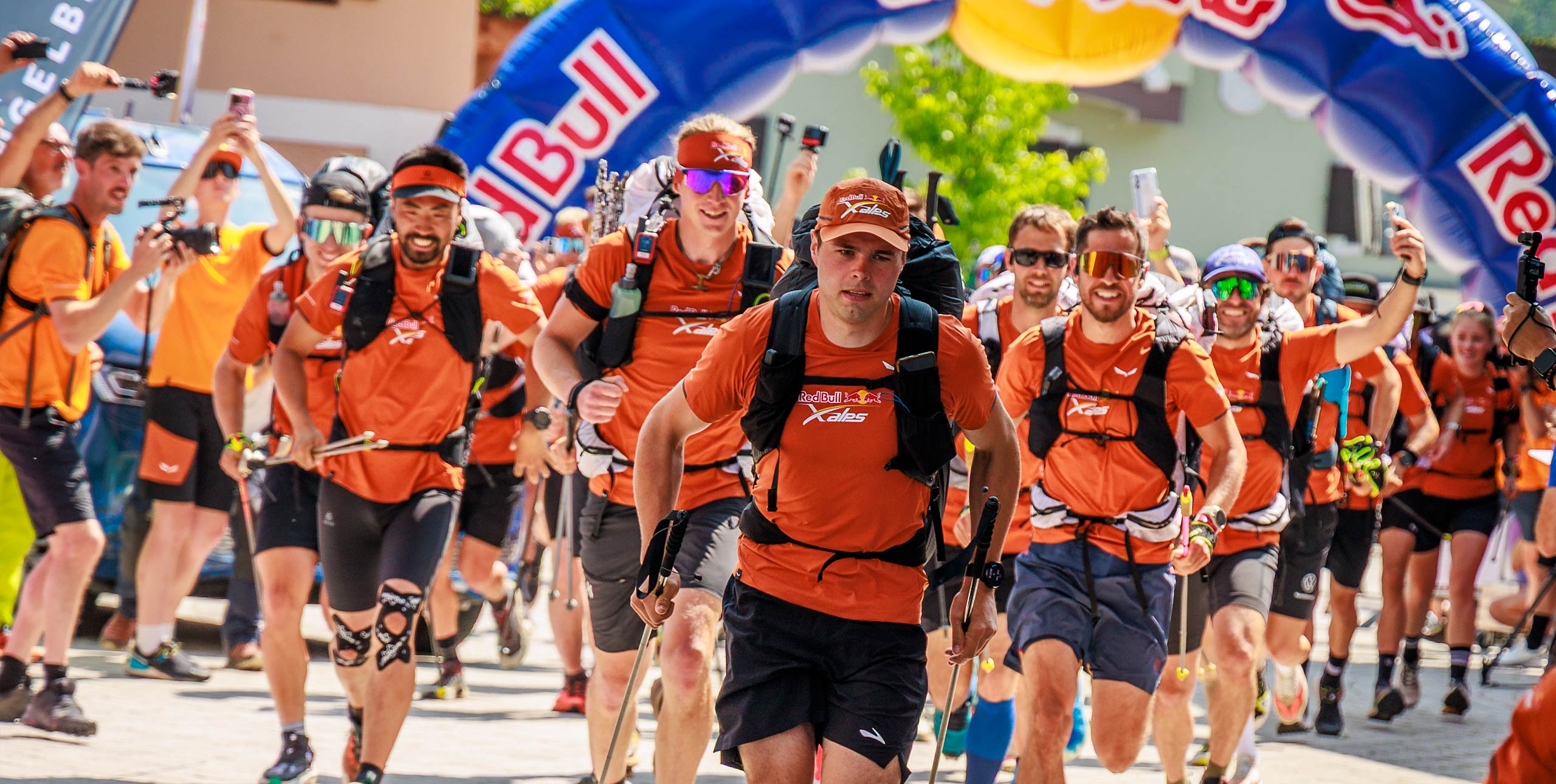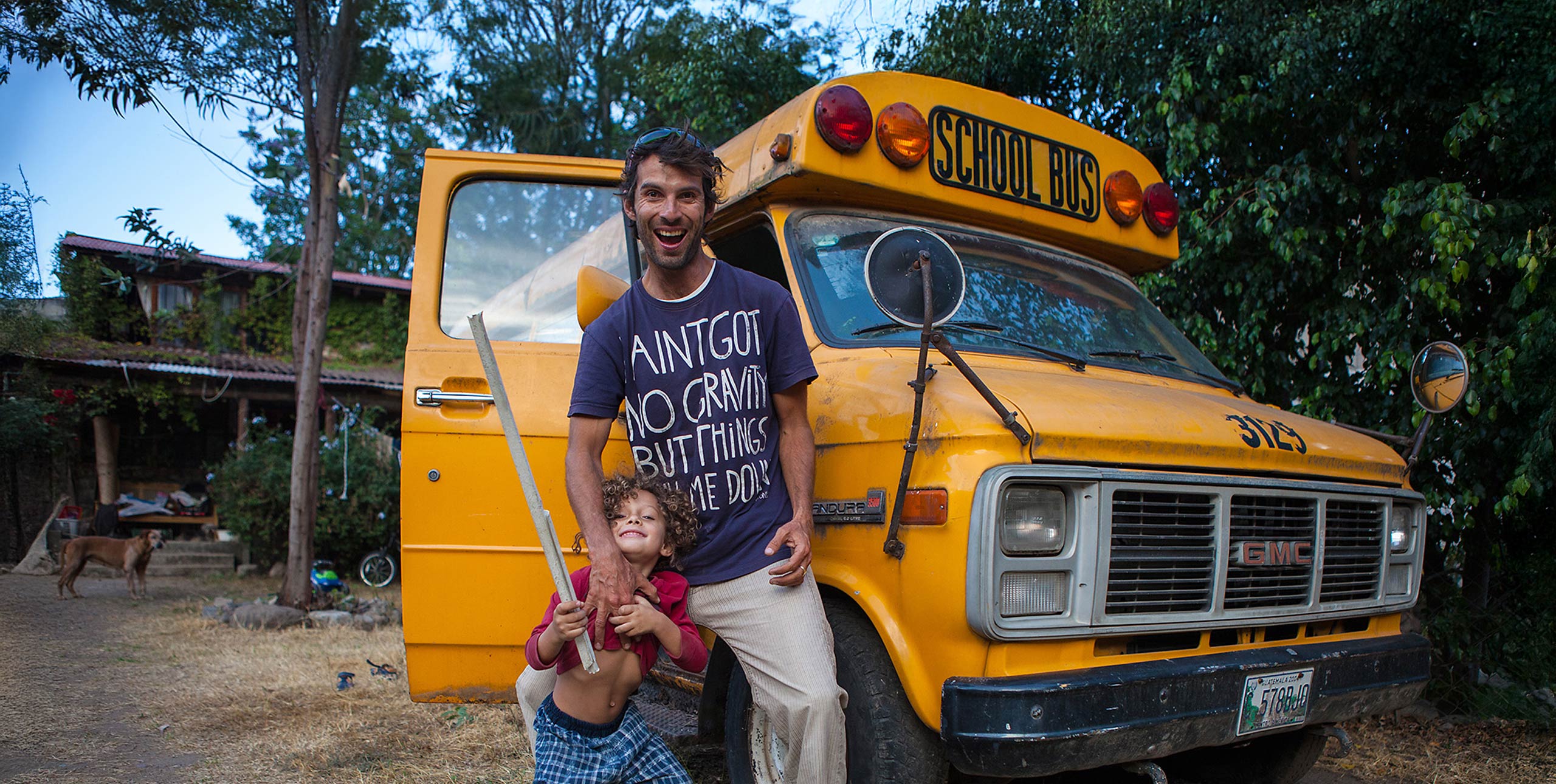
The route of the Red Bull X-Alps 2023 has been revealed and it’s a 1,223km-long epic around the main spine of the Alps. It bounces through 15 turnpoints, five countries (Austria, Germany, Switzerland, France and Italy) and even a via-ferrata climb in the Dolomites before finishing back near where it started. The route is 15km shorter than the 2021 route, which was the longest ever at 1,238km.
For the first time since 2007 the race will start in a different place. For the past 15 years pilots have lined up in the centre of downtown Salzburg before hot-footing it up to the first launch on the Gaisberg. This year however, the race will start in the Austrian town of Kitzbühel, famous for its downhill ski race, the Hahnenkamm.
The 34 pilots will start on foot in the town centre and then run 900m ascent to the first take-off. Given the weather they will then launch and fly.
After the start, pilots will need to head south-east to Wagrain-Kleinarl, Austria, the host of the 2019 and 2021 Prologues before turning north-west to Chiemgau Achental, Germany.
From here the route heads west across southern Germany and Switzerland, passing the turnpoints of Lermoos in the Tiroler Zugspitz Arena, then to Piz Buin, Switzerland, then Fiesch, in the Aletsch Arena. Pilots must then cross the Aletsch glacier – the longest in Europe – to tag the next turnpoints of Frutigen and the peak of Niesen, 2,362m.

This is literally home territory for the two leading Swiss pilots, Chrigel Maurer and Patrick von Känel and they will be guaranteed to pass through here quickly, whether in the air or on foot. Pilots then have to cross the Bernese Alps again to reach turnpoint 9, Mont Blanc.
After crossing the mountain pilots must stop at the Col du Petit Saint-Bernard to take a selfie by the signboard. It’s then a 440km race eastwards across northern Italy, with three mountain turnpoints: Dufourspitze, Cima Tosa and Tre Cime (3 Zinnen). Here, pilots will have to get their climbing gear out. The 3 Zinnen Turnpoint is situated on the summit of Paternkofel (2,740m) which athletes can only tag after a via ferrata climb.
This via ferrata is pretty unique as it travels 600m through tunnels inside the mountain. Built during the First World War the tunnels were occupied by soldiers for months at a time. Pilots will need a headtorch to navigate their way through, before stepping through a rock window and making their way up fixed steel cables to the summit.
The popular climbing destination of Sexten in the Italian Dolomites is the next Turnpoint. From here pilots must cross the Alps a final time to reach the Turnpoint of Schmittenhöhe. It’s then just a short glide to the floating finish line in the lake at Zell am See.
View this post on Instagram
Race co-founder Ulrich Grill said the route offers “many new challenges” for the pilots. “The first part begins in the mountains of Austria and southern Germany and then dives deep into the Alps, with many options opening up. It will require a lot of strategic thinking from athletes – as well as incredible endurance. With this route, the race once again lives up to its reputation as the ‘world’s toughest adventure race’. It’s also a route that celebrates 20 years of Red Bull X-Alps.”
Notably, the route stops short of entering the French Alps beyond Mont Blanc. This will be a blow to some of the French athletes as they won’t be flying on any home turf at all throughout the whole race. Conversely, the Swiss pilots, including race champion Chrigel Maurer, will most likely be thrilled to see the route travel through the heart of Switzerland.
Tom Payne, a veteran race watcher, X-Alps pilot and helper to many teams gave us his first thoughts: “Like 2021, this is a race track rather than a journey. Psychologically, it’s quite different to the old goal in Monaco: you’re no longer adventuring through the Alps to a distant destination, you’re now literally racing around the Alps – I can almost hear the tyres screeching as they turn the corner around Mont Blanc.”
He added: “It’s pure mountain flying, the whole way. Previously we’ve had some sections that have forced the athletes to hike: either the flatlands of the Italian plains (2019) or airspace. This is a supremely flyable route, avoiding all major cities (we don’t even start on the tarmac in Salzburg). The majority of the route is pure flying motorway – lines flown both in previous X-Alps and classic XC routes.”
He said there are two key cruxes. “First, Fiesch to Frutigen. Here pilots have to cross the 4,000m+ Bernese Oberland with the Eiger blocking their way. Not only is the terrain high and glaciated, they’ll also be fighting against the prevailing NW’ly winds. The local Swiss pilots will have a key advantage here, as it is their flying playground.
“Second, Mont Blanc and the Col du Petit St-Bernard. More high terrain, but the obligatory selfie at the Col will put them on the ground in a very windy place. The aerology SE of Mont Blanc is particularly complex and will be probably the toughest part of the aerial race.”
He added: “The long section through Northern Italy will potentially be very fast with the prevailing winds mostly pushing the athletes along, but with low valleys and high tree lines, anyone who bombs out will have a long hike up to the next take off. Expect some long flights – and a few soul-crushing disappointments. The final race back to Zell Am See over the Grossglocker massif will be as exciting as in 2021 – hopefully with even more pilots dashing for the podium.”
The race starts on 11 June and is preceded by a one-day Prologue on 8 June that takes place in the mountains surrounding the resort of Kitzbühel – Kirchberg. Pilots will have to hike-and-fly a 58.6km course around seven turnpoints – almost double the distance of the 2021 Prologue.











